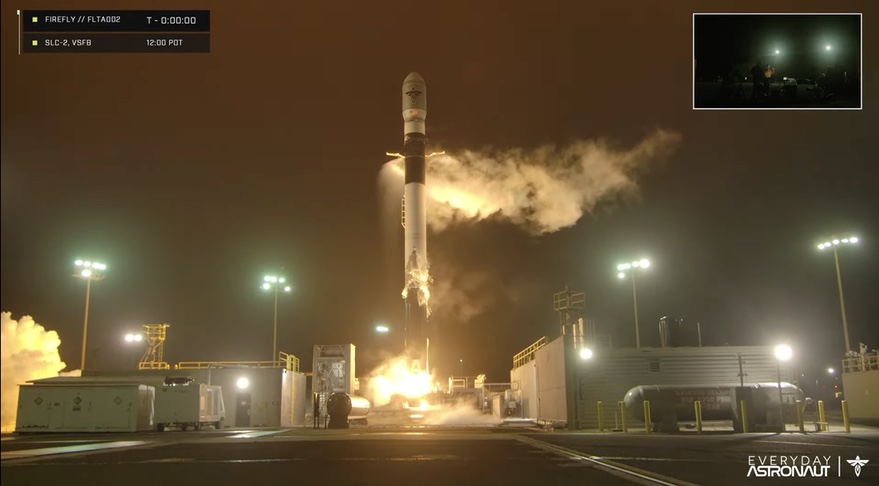
Firefly says Alpha launch a success despite payload reentries (Image Credit: Space News)
WASHINGTON — Firefly Aerospace says its Alpha launch early this month was a success despite the fact that its payloads, placed in a lower orbit than planned, reentered within several days.
The Alpha rocket lifted off Oct. 1 from Vandenberg Space Force Base in California on the second flight of the vehicle, after the inaugural Alpha launch 13 months earlier failed when a first-stage engine shut down shortly after liftoff. On this launch, Alpha’s upper stage reached orbit and deployed its payloads, and the company declared the launch a success.
The launch carried three satellite payloads: a 3U educational cubesat called Teachers in Space (TIS)-Serenity, a 3U NASA technology demonstration cubesat named TechEdSat-15 and PicoBus, a deployer from the Libre Space Foundation carrying five PocketQube piosatellites. The U.S. Space Force ultimately cataloged five objects from the launch, including the Alpha upper stage, with two of the other four provisionally identified as TIS-Serenity and TechEdSat-15.
The satellites, though, appeared to be in lower orbits than originally planned. The press kit distributed by Firefly ahead of the launch said that the satellites would be placed in a 300-kilometer orbit after the upper stage performed a circularization burn. However, Space Force tracking data initially placed the objects into orbits with a perigee of about 220 kilometers and apogee of 275 kilometers.
Those orbits caused the payloads to decay rapidly. According to the Space Force’s Space-Track database, three of the objects reentered by Oct. 5 and the fourth, the Alpha upper stage, reentered on Oct. 7. Only the payload labeled as “Object A”, at one point identified as TIS-Serenity, is still listed in orbit according to Space-Track, although other sources list it as also having reentered.
That’s led to speculation that there was a problem with the launch. Seradata, a firm owned by space traffic management company Slingshot Aerospace that runs a leading satellite database, announced Oct. 6 it considered the launch a failure “due to the likely life loss for the seven satellites aboard when compared to their design lives.”
Firefly, though, reiterated the launch was a success. “First stage and second stage performance was in-line with our flight 2 requirements and therefore successful,” the company said in response to questions from SpaceNews about the mission.
There had been discussion immediately after the launch about a potential stage separation issue, with onboard video showing the nozzle of the upper stage engine appearing to nearly hit the interstage. Firefly, though, said there were no issues with stage separation: “Stage separation relative motion remained within vehicle requirements and expected from component level qualification and therefore successful for this test flight.”
“Our primary objective for the Alpha FLTA002 mission was to achieve a pre-defined elliptical orbit, following the second stage burn, which was 100% successful,” the company added, omitting the circularization burn mentioned in the press kit. “Our data review continues, but we are excited by our preliminary review showing that we will only need to make very minor tweaks for our next mission.”
NASA spokesperson Rachel Hoover confirmed Oct. 7 that TechEdSat-15 had deorbited. She added, though, that the spacecraft’s mission had been expected to last less than 10 days.
The primary purpose of TechEdSat-15 was to test an “exo-brake,” a drag device to aid in the deorbiting of satellites. The exo-brake is designed to operate at higher temperatures than other drag devices to enable more precise targeting of satellite reentries. The low orbit the spacecraft was placed in, though, led some to wonder if the exo-brake could be tested.
“TechEdSat-15 was delivered to an orbit that allowed the project to achieve its objectives,” Hoover said. “The team is now analyzing the flight data to study performance of the latest iteration of its exo-brake technology.”








